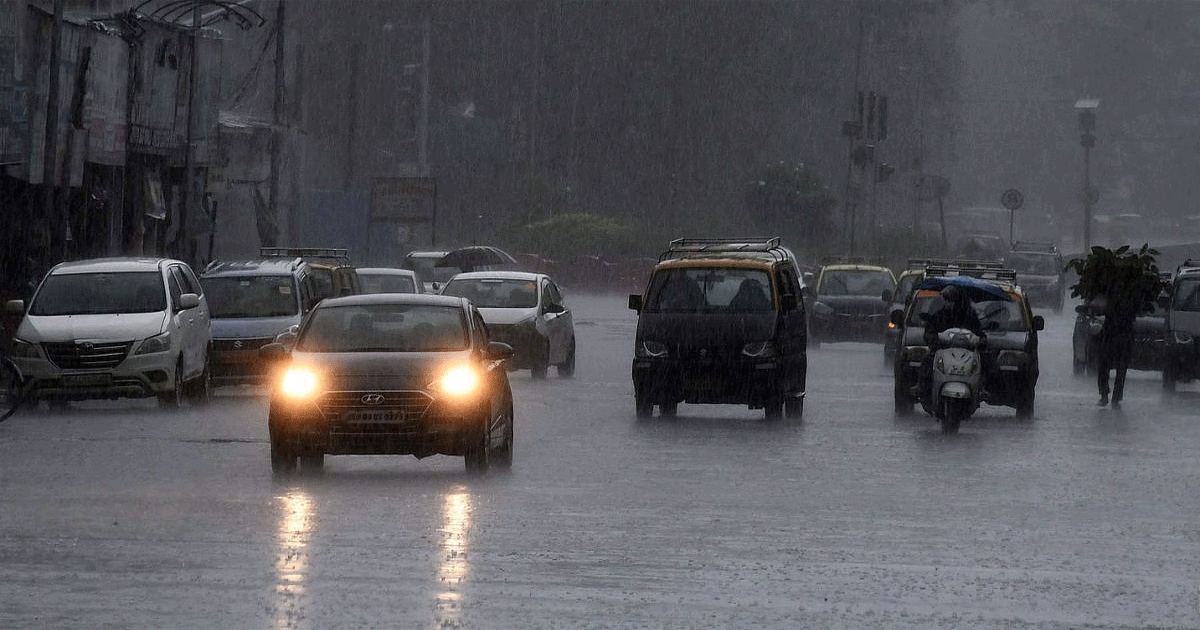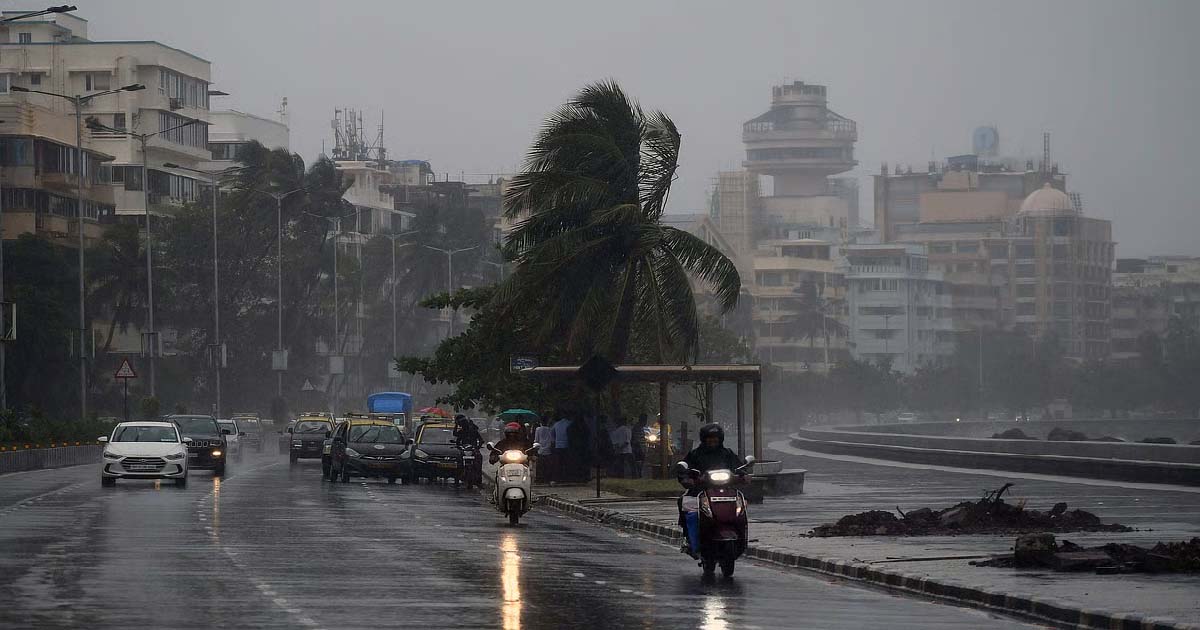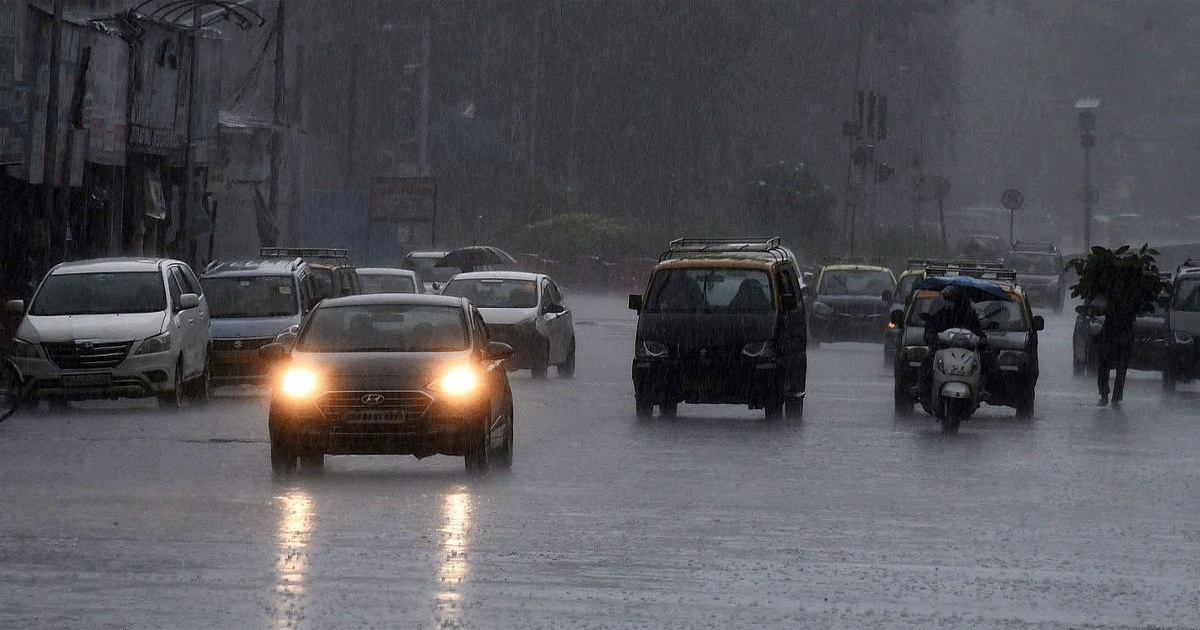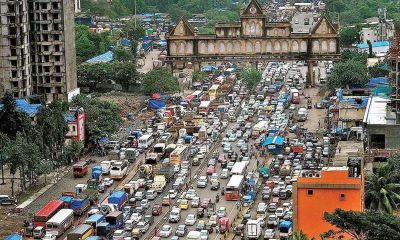Monsoon
Premature to attribute extreme heatwave in India, Pak solely to climate change: WMO

After multiple scientists claimed that the current spell of heatwaves in India and Pakistan are due to climate change, the World Meteorological Organization (WMO) said it would be premature to attribute it solely to climate change.
The WMO also appreciated warning systems and heat action plans that helped save lives.
In a statement issued on Friday night, the WMO said: “It is premature to attribute the extreme heat in India and Pakistan solely to climate change. However, it is consistent with what we expect in a changing climate. Heatwaves are more frequent and more intense and now start earlier than it did in the past.
“India, especially the northwest, has been witnessing a third heatwave since March with the current, third spell sending mercury soaring to more than 45 degrees Celsius across dozens of states of India, including the northwestern Himalayan states too.
“Similar temperatures have been seen in Pakistan. The Pakistan Meteorological Department said that daytime temperatures are likely to be between 5 degrees Celsius and 8 degrees Celsius above normal in large swathes of the country.
The agency warned that in the mountainous regions of Gilgit-Baltistan and Khyber Pakhtunkwa, the unusual heat would enhance the melting of snow and ice and might trigger glacial lake outburst floods or flash floods in vulnerable areas,
“Air quality has deteriorated, and large swathes of land are at risk of extreme fire danger.”
India recorded its warmest March on record while Pakistan recorded its highest March temperature in the past 60 years, with a number of stations breaking March records, the WMO said.
The Intergovernmental Panel on Climate Change in its Sixth Assessment Report (AR6) has said that heat waves and humid heat stress will be more intense and frequent in South Asia in this century.
The WMO, endorsing India’s Ministry of Earth Sciences’ publication on climate change in India that has a whole chapter on temperature change, said: “The frequency of warm extremes over India has increased during 1951-2015, with accelerated warming trends during the recent 30 year period 1986-2015. Significant warming is observed for the warmest day, warmest night and coldest night since 1986.”
Through its statement, the WMO also reminded the need for a multi-hazard early warning system that it has promised to ensure for all in the next five years.
“Heatwaves have multiple and cascading impacts not just on human health, but also on ecosystems, agriculture, water and energy supplies and key sectors of the economy. The risks to society underline why the WMO is committed to ensuring that multi-hazard early warning services reach the most vulnerable,” it said.
Stating that both India and Pakistan have successful heat-health early warning systems and action plans, including those specially tailored for urban areas, the WMO said: “Heat Action Plans reduce heat mortality and lessen the social impacts of extreme heat, including lost work productivity. Important lessons have been learnt from the past and these are now being shared among all partners of the WMO co-sponsored Global Heat Health Information Network (GHHIN) to enhance capacity in the hard hit region.
“The South Asia Heat Health Information Network, supported by GHHIN, is working to share lessons and raise capacity across the South Asia region.”
Maharashtra
Mumbai Weather Update: Heavy Rain Alert Issued For City & Konkan; IMD Issues Yellow Alert

Mumbai: Mumbai began the week under heavy cloud cover on Monday morning, with the India Meteorological Department (IMD) issuing a yellow alert for the city and its surrounding regions. After intermittent but intense showers over the past few days, weather officials have forecast widespread rainfall across Mumbai, Thane, Navi Mumbai and other parts of the Konkan belt throughout the day.
According to the IMD, heavy to very heavy rainfall is expected in several districts, including Mumbai, Thane, Navi Mumbai, Raigad, Ratnagiri, Palghar and Sindhudurg. The alert indicates the possibility of disruptions due to waterlogging in low-lying areas, traffic delays and interruptions to suburban rail services. Maximum and minimum temperatures in Mumbai are likely to hover around 29 and 25 degrees Celsius, respectively, keeping conditions cool but humid.
In Thane and Navi Mumbai, heavy showers are predicted to persist through the day. Heavy rain showers may lead to disruptions on the Central & Harbour Railway routes, which are often affected during prolonged spells of monsoon rain. Authorities have urged residents to exercise caution while stepping out, especially during peak rainfall hours.
Palghar district, which has already been receiving continuous rainfall over the past two to three days, remains under a yellow alert. While some parts are likely to see moderate rain, others may experience intense downpours accompanied by strong winds. The IMD has also cautioned about damp and humid conditions prevailing across the region.
The southern Konkan districts of Raigad, Ratnagiri and Sindhudurg are also bracing for another day of heavy rain. These areas, which have been dealing with waterlogging and disruptions to daily life over the past week, are expected to face similar challenges again.
Maharashtra
Mumbai Weather Update: City To See Light To Moderate Showers With Cloudy Skies Today; No Rain Alert For Next Few Days

WETHER
Mumbai: Mumbai woke up to scattered light rain showers on Friday morning. Though the city received rains in the early hours, the weather department has not issued any rain alert for today.
According to the IMD, the city would see an overcast sky with intermittent light showers, while a few areas may receive moderate spells. However, there is no forecast of heavy or widespread rainfall. Maximum temperature is likely to touch 28°C, while the minimum may settle at 25°C. Winds near the coast are expected to remain light to moderate.
Neighbouring Thane and Navi Mumbai are set to experience similar conditions. Residents can expect drizzle to moderate showers through the day, with no significant rainfall activity on the radar. Cloudy skies will persist, and the weather is likely to remain humid. Daytime temperatures are expected to hover around 28°C, while the night temperature will remain between 24°C and 25°C.
In Palghar, skies will stay overcast, and the rainfall pattern is expected to be uneven. While some pockets may only see light drizzle, others could receive moderate spells. The weather confirmed that no weather alert has been issued for the district. Maximum temperature is forecast at 28°C and minimum at 25°C, with conditions expected to remain damp and humid.
Further down the Konkan coast, Raigad, Ratnagiri and Sindhudurg districts, which witnessed heavy rain over the past few days, are also expected to see a decline in intensity. IMD officials said only light to moderate showers are likely, accompanied by cloudy weather.
The department clarified that there is no threat of heavy rain on Friday. Coastal winds in these regions may blow slightly stronger than in Mumbai and Thane. Daytime temperature could reach 29°C, while the minimum will remain around 25°C.
Maharashtra
Mumbai Weather Update: Heavy Rains To Lash City Today, IMD Issues Yellow Alert For Sept 5-6

WETHER
Mumbai: Mumbaikars woke up on Friday to a grey sky and yet another spell of rain-soaked morning showers, as the monsoon continued its firm grip over the city. The India Meteorological Department (IMD) issued a yellow alert for Mumbai, warning of heavy rainfall through the day on September 5 and 6. The prediction has kept civic authorities and residents on watch, with the city bracing for another round of waterlogging and traffic snarls.
According to the IMD’s forecast, the next 48 hours are expected to bring intermittent spells of heavy rain across Mumbai and its suburbs. Friday and Saturday will see generally cloudy skies with intense downpours, accompanied by humid and sticky weather. Daytime temperatures are likely to hover between 30–31 degrees Celsius, while the minimum will remain close to 24 degrees, offering little comfort to residents battling the damp conditions.
The rains, however, are not expected to last with the same intensity throughout the coming week. From September 7, Mumbai may finally witness a gradual dip in rainfall activity. The IMD has forecast moderate showers on Sunday and Monday, which will bring some relief to commuters. By September 9 and 10, the city is likely to experience light rainfall, and no weather warnings have been issued for these days, hinting at a much-needed break from the heavy monsoon spell.
Meanwhile, across Maharashtra, the weather department predicted varying rainfall intensity. On September 5, the monsoon remains active over the state. Light to moderate rain is expected in several districts, while central Maharashtra may experience heavy to very heavy rainfall in isolated pockets. Northern coastal Maharashtra is also on alert, with winds forecast to blow at speeds of nearly 50 kmph, raising concerns for fishermen and coastal residents.
In the Konkan region, the situation remains mixed. Raigad district has been placed under an orange alert with the possibility of very heavy rains in some parts. Meanwhile, Ratnagiri and Sindhudurg, on the other hand, are under a yellow alert, indicating heavy rain at isolated places but not of the same intensity as Raigad. Temperature-wise, Konkan is recording a maximum of around 29.4 degrees Celsius and a minimum of 25 degrees, reflecting the cloudy and damp weather conditions.
-

 Crime3 years ago
Crime3 years agoClass 10 student jumps to death in Jaipur
-

 Maharashtra1 year ago
Maharashtra1 year agoMumbai Local Train Update: Central Railway’s New Timetable Comes Into Effect; Check Full List Of Revised Timings & Stations
-

 Maharashtra1 year ago
Maharashtra1 year agoMumbai To Go Toll-Free Tonight! Maharashtra Govt Announces Complete Toll Waiver For Light Motor Vehicles At All 5 Entry Points Of City
-

 Maharashtra1 year ago
Maharashtra1 year agoFalse photo of Imtiaz Jaleel’s rally, exposing the fooling conspiracy
-

 National News1 year ago
National News1 year agoMinistry of Railways rolls out Special Drive 4.0 with focus on digitisation, cleanliness, inclusiveness and grievance redressal
-

 Maharashtra1 year ago
Maharashtra1 year agoMaharashtra Elections 2024: Mumbai Metro & BEST Services Extended Till Midnight On Voting Day
-

 National News1 year ago
National News1 year agoJ&K: 4 Jawans Killed, 28 Injured After Bus Carrying BSF Personnel For Poll Duty Falls Into Gorge In Budgam; Terrifying Visuals Surface
-

 Crime1 year ago
Crime1 year agoBaba Siddique Murder: Mumbai Police Unable To Get Lawrence Bishnoi Custody Due To Home Ministry Order, Says Report












